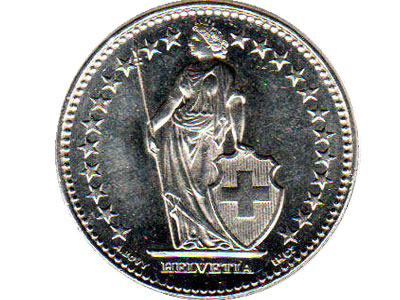Swiss coins catalog and price guide
The unification of the Alpine countries into
a single state began in the 13th century, when three regions -
Uri, Schwyz and Unterwalden - united in a military alliance.
In 1425, the emperor granted Zurich the right to mint coins, and
later other cantons received this right.
In 1798, Switzerland was captured by revolutionary France. The
Helvetic Republic was proclaimed (1798-1803). The history of the
Swiss franc as a single currency for all cantons dates back to
the franc of the Helvetic Republic. At this time, gold coins in
denominations of 16 and 32 francs were minted, as well as silver
francs and small change coins - centimes and batzens.
With the fall of the Helvetic Republic in 1803, the Helvetic
franc was discontinued. The cantons returned to minting their
own coins. In 1825, the Swiss cantons adopted a convention to
unify their monetary systems, but the single Swiss franc was not
issued until a quarter of a century later (1850). In addition to
the franc, there were coins in circulation in denominations of
1, 2, 5, 10 and 20 centimes.
In the 1870s, Switzerland began minting gold coins in
denominations of 10 and 20 francs. On the coins Helvetia appears
framed by stars, which symbolize the number of cantons.
In the late 1960s, the metal used for coin production changed,
with silver being replaced by the cheaper copper-nickel alloy.
Coins of Swiss cantons and cities

- Aargau
- Bern
- Chur
- Fribourg
- Geneva
- Graubunden
- Lausanne
- Luzern
- Neuchatel
- Obwalden
- Schaffhausen
- Sion (Sitten)
- Schwyz
- Zug
- Zurich
Helvetian Republic 1798–1803
Swiss Confederation since 1848
 Confoederatio Helvetica
Confoederatio Helvetica
